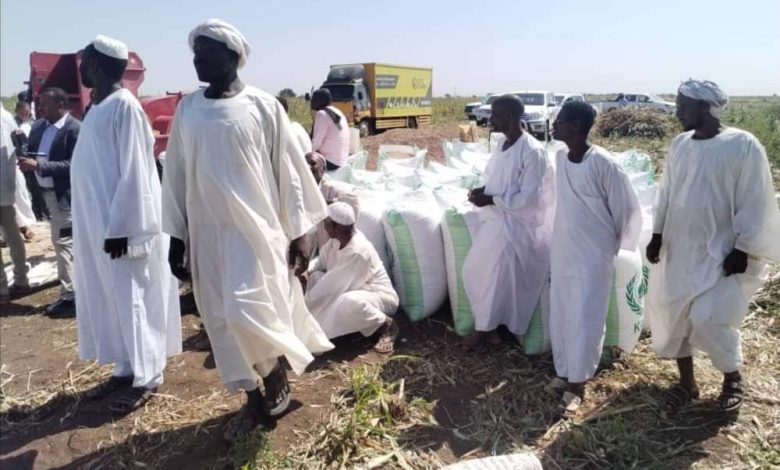Suki Scheme Resumes production

Sinnar – Rehab Abdullah
The head of the initiative to rehabilitate the Suki Agricultural Scheme, the head of the Mahla Wadtaktouk Specialist Association, Engineer Omer Hashem, has announced the return of the Suki Agricultural Scheme to the production circle once again, pointing out in his address (Wednesday) the celebration of the start of harvesting operations of the sorghum crop in the Suki Agricultural Scheme in one hour and one time, with the production of one hundred sacks of hawasha (field) that it is one of the most fertile agricultural lands in Sudan, and it has previously contributed to very high productivity in previous periods. Hashem attributed that the Scheme was recently exposed to collapse due to many problems, including the disruption of irrigation pumps and the failure of the finances to meet maintenance bills for a period of five years, as well as due to the large amount of financial and administrative corruption, as the last fertilizer financing was in the year 2021. The Scheme management increased the urea fertilizer bill to the amount of 270 billion, which is three times the price of fertilizer, according to Documents and the report of the Auditor General, and he pointed out that the Federal Minister of Agriculture and the group of farmers from the Suki Agricultural Scheme Rehabilitation Initiative were able to restore life to this land, which has an area of not less than 130,000 fedans, totaling the area of the Suki Agricultural Scheme, and 12,500 farmers, and 136 villages and 700 farmers benefit directly from the Scheme. A thousand people, in addition to more than double this number, were displaced from Khartoum and live with their relatives in these villages and this Scheme. He continued, “If it were not for the efforts of the Federal Minister of Agriculture, with the assistance of the Federal Minister of Finance, the Pumps Department of the Ministry of Irrigation and the Agricultural Bank, as well as the solidity, awareness, and participation of the security services within the Scheme’s localities, and the awareness and sacrifice of the Farmers Group in the initiative to rehabilitate the Suki Scheme, we could not be able to reach this production and this day,” adding that, thanks to the joint efforts of this group, as an area of not less than 65 thousand fedans was irrigated, including 4 thousand fedans of “molokhiya” and about three thousand okra, as well as sesame and four thousands of fedans of lentils, 500 fedans of vegetables, and 60,000 fedans of sorghum, after a cessation of production that lasted about three years, pointing out that the previous year, four million heads of livestock migrated from the Scheme due to the lack of drinking water for the animals.
Hashem noted that the expected productivity rate of sorghum this year ranges from 15 to 20 sacks per fedan, for an area within 20% of the 60,000 fedans that have been irrigated, and he expects productivity to rise if the technology is fully applied and irrigation is carried out at an appropriate rate, bringing the average fedan to 30 sacks. It is expected that the productivity of one fedan now will not exceed 8 to 10 sacks for 80% of the total area of 60,000 fedans irrigated with sorghum. He described this productivity as being below ambition and very low. He attributed this to the fact that most farmers use traditional tools in agriculture and do not follow minimum recommended technology.
He added that the Scheme is national and governmental and is one of the four national irrigated Schemes in country.



